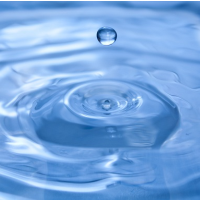State Adopts $500 Water Penalty, while Revising May Use from Down 25% to Up 1%

Last June, the State Water Resources Control Board delivered the bad news (pdf). California was falling short of Governor Jerry Brown’s request in January that consumers voluntarily use 20% less water. But it did note that May inspired hope with a 25% decline from a three-year monthly average (2011-13).
On Tuesday, the Water Board said it had better data now (pdf) and the 25% decline was actually a 1% gain. Apparently the reporting process from the water districts has been tightened up since media reports noted a lack of monitoring.
The board marked the occasion by adopting an unprecedented emergency conservation regulation aimed at reducing outdoor urban water use. It imposed a $500 fine-a-day for a series of offenses for individuals, including washing a driveway with a hose, too much runoff while watering landscape, washing a car with a nozzle-less hose and using unrecycled, potable water in a water feature.
Water suppliers could get slapped with a $10,000-a-day cease-and-desist order and are also subject to $500-a-day fines for infractions. And, “finally, large water suppliers must report water use on a monthly basis to track progress.”
The restrictions take effect in August and the board optimistically predicted that they could save the state enough water to supply 3.5 million people for a year.
Another report (pdf) released this week, from the Center for Watershed Sciences at the University of California, Davis, was full of daunting information about the drought, which is in its catastrophic third year.
“The 2014 drought is responsible for the greatest absolute reduction in water availability for California agriculture ever seen,” the report said. “The drought is likely to continue through 2015.”
The total economic cost in 2014 of the “third driest year on record” will be $2.2 billion and 17,100 jobs.
Coastal and Southern California farm regions, e.g. those not growing water-sucking almonds in the desert, are less affected by the drought. Groundwater, the most vulnerable asset in this crisis, is being sucked up by farmers to compensate for loss of other sources. Agriculture will rely on it for 53% of its water this year, compared to the usual 31%.
The state has scary aggregate numbers like that, but “our estimates of regional groundwater are poor. This lack of groundwater pumping information precludes most forms of regional groundwater management.” Unfortunately, agriculture accounts for 80% to 90% of the state’s water use.
The report did not take on overpumping of groundwater directly in the report, but wagged a finger early and warned that lost resources must be replaced—after the drought has ended.
–Ken Broder
To Learn More:
California Adopts $500 Criminal Penalty for Water Waste (by Matt Weiser, Sacramento Bee)
California Water Use Rises Amid Crippling Drought (by Don Thompson, Associated Press)
UC Davis Study Finds Drought Will Cost California Billions (by Michael Doyle, Sacramento Bee)
California Drought Expected to Cost State $2.2 Billion in Losses (by Jennifer Chaussee, Reuters)
State Tanks on Reaching Governor’s Goal of 20% Reduction in Water Use (by Ken Broder, AllGov California)
Economic Analysis of the 2014 Drought for California Agriculture (Center for Watershed Sciences, University of California at Davis) (pdf)
- Top Stories
- Controversies
- Where is the Money Going?
- California and the Nation
- Appointments and Resignations
- Unusual News
- Latest News
- California Forbids U.S. Immigration Agents from Pretending to be Police
- California Lawmakers Urged to Strip “Self-Dealing” Tax Board of Its Duties
- Big Oil’s Grip on California
- Santa Cruz Police See Homeland Security Betrayal in Use of Gang Roundup as Cover for Immigration Raid
- Oil Companies Face Deadline to Stop Polluting California Groundwater





